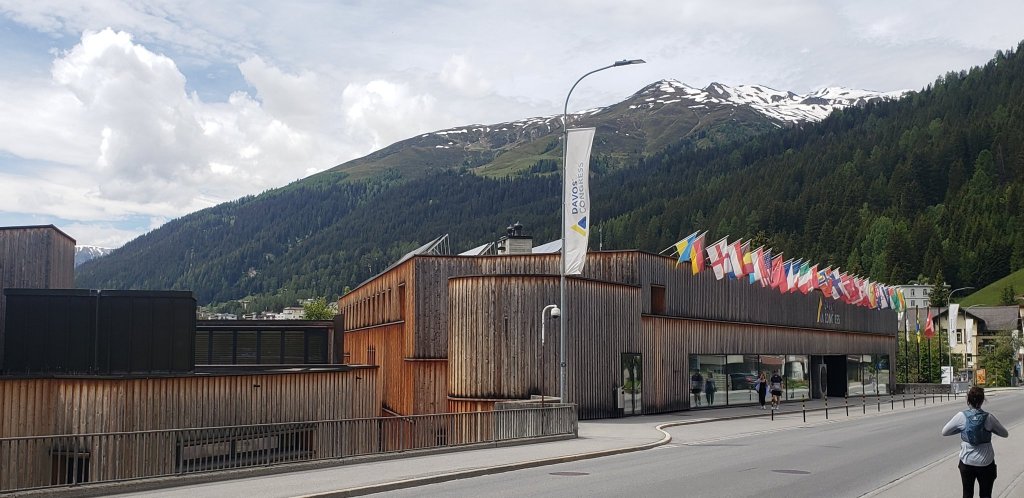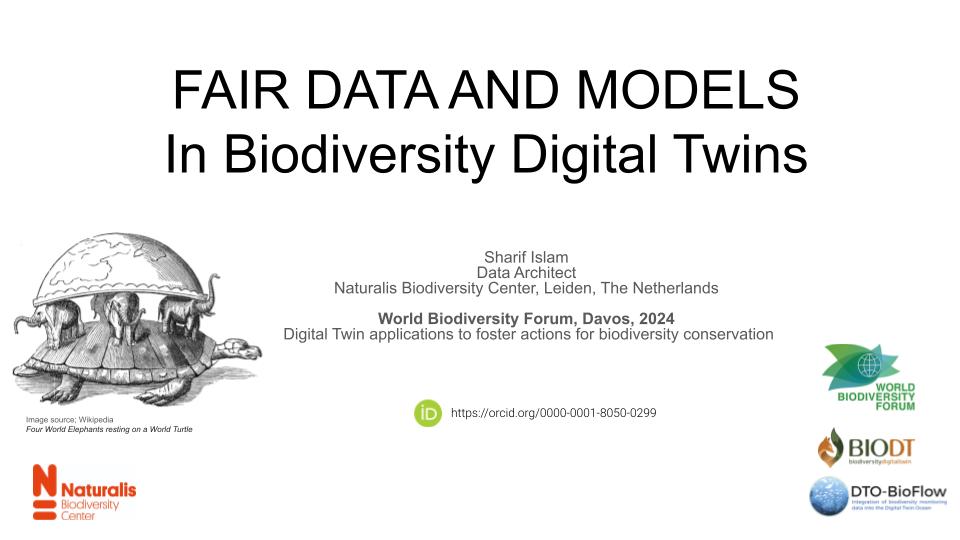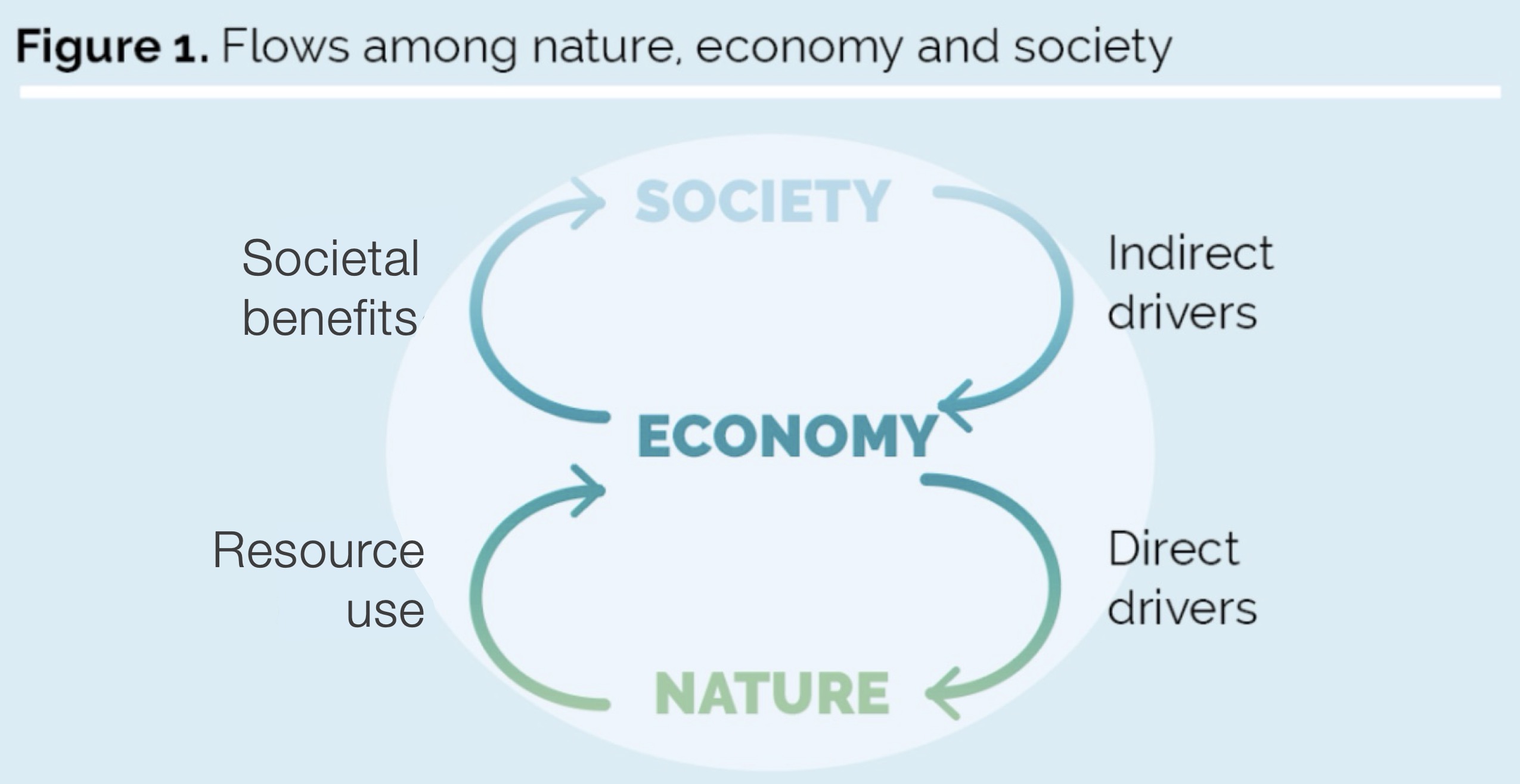The 3rd World Biodiversity Forum in Davos, Switzerland, brought together about 800 participants. The event covered diverse topics and discussions on the future of biodiversity, emphasising marine conservation, freshwater biodiversity, and climate change impacts. Discussions focused on data sharing, interdisciplinary approaches, and nature-based solutions to bridge global biodiversity monitoring gaps through trans-disciplinary practices and data initiatives.

Davos Congress Center, site of the World Biodiversity Forum
Key highlights from my participation and discussions:
- The importance and centrality of data and modelling were mentioned during the opening plenary. Throughout the forum, there were several presentations focusing on generating decision-relevant information for the 2030 biodiversity goals, addressing gaps and biases in mobilising biodiversity data, identifying blind spots and overlaps in biodiversity indicators, and translating global goals into national actions using a specific framework. However, these discussions on data came with a caveat. Understanding the complex interplay of biodiversity, society, politics, and nature often requires a focus on local contexts.
- While the concepts of “story” and “storytelling” can sometimes seem cliché, several talks underscored the importance of context and the need for fit-for-purpose data based on both global vision and local concerns. As we accelerate digitisation and monitoring efforts, a deluge of data is occurring with a need for contextual understanding. How do we get that context? We require methods to quantify the local significance of biodiversity crisis. One successful example that was shared was conservation efforts addressing human-wildlife conflict in Uganda, as highlighted here: WWF Uganda Initiative.
- Naming and appreciating local flora and fauna is crucial in biodiversity. As we all know, taxonomy is an important aspect of biodiversity. To paraphrase one of the speakers, “nothing in biology makes sense if the organisms studied are not identified and named.” However, with all these complex discussions about the tree of life, phylogeny, subspeciation, and scientific objectivity, there is often a lack of focus on appreciating and understanding the flora and fauna around us. Several plenary members emphasised the importance of taking the time to “smell the roses.”
- I presented FAIR data and modelling work in the session on Digital Twin applications aimed at fostering actions for biodiversity conservation. During this session, we explored how traditional conservation decisions typically rely on ground-truth observations and remote monitoring, sometimes supplemented by predictive models or experiments. However, these methods can be slow or insufficiently responsive to rapid environmental shifts, which can delay timely interventions.
The Digital Twin paradigm offers a promising approach by enabling predictive modelling of ecosystems, thereby facilitating quicker adaptation to environmental changes. There is still progress to be made in biodiversity and ecology twinning, especially concerning the foundational integration of data and modelling. However, we were inspired by exciting new ideas shared by projects like BioDT, DTO-Bioflow, European Digital Twin Ocean-Blue Cloud 2026 cooperation, LTER-LIFE, and Crane Radar among others.
- David Obura (current chair of IPBES) discussed the importance of simplifying our presentation and communication. For instance, he highlighted the relationship between nature, the economy, and society. While this concept is often complicated by charts and numbers, it can be effectively conveyed through a simplified image such as this:
-

- Biodiversity Genomics: A dedicated session focused on the urgency of the Biodiversity Genomics Europe project. It addressed the challenges of standardisation (data and sequencing processes), community collaboration, and funding. Emphasis was placed on creating a toolkit-based approach to overcome logistical issues (such as shipment and permits) and legal considerations (such as Nagoya Protocol and Access and Benefit Sharing agreements) in biodiversity genomics. There was also an emphasis on not only technical knowledge (such as how to sample and sequence certain organisms) and data sharing (via GBIF, GenBank, BOLD) but also on improving how we document errors, findings, and challenges within the scientific community. This will allow for better communication of these aspects to our funders to showcase gaps and needs.
- Visual Sketching: The forum included an interesting visual sketching output (Building pathways towards desirable futures for Arctic biodiversity– a design thinking workshop) that captured the essence of discussions in a creative and engaging manner.

- Another interesting plenary presentation was by Michelle Lim, associate Professor of Law, Singapore Management University. She discussed the concept of the “endling” in her work, challenging typical legal terms that often obscure the harsh reality of extinction, such as “threatened” and “endangered”. An endling represents the last surviving individual of a species, symbolising the endpoint of biodiversity loss. Lim advocates for a paradigm shift in environmental law, urging recognition and emotional connection to extinction through narratives of endlings like the Christmas Island Forest Skink. She proposes a broader, pluralistic approach to environmental law that embraces “other-than-human” perspectives and utilises “fiction” (stories, narratives instead of just data) as a legal tool. This approach acknowledges diverse knowledge systems and promotes radical imagination in addressing global environmental challenges. You can explore her ideas further in these two papers (both published in academic legal journals): Extinction: hidden in plain sight – can stories of ‘the last’ unearth environmental law’s unspeakable truth? and Fiction as Legal Method
Even though not all aspects and regions were represented, overall, the World Biodiversity Forum 2024 provided a platform for exchanging ideas, addressing challenges, and envisioning a positive future for biodiversity through collaborative efforts and innovative approaches.
